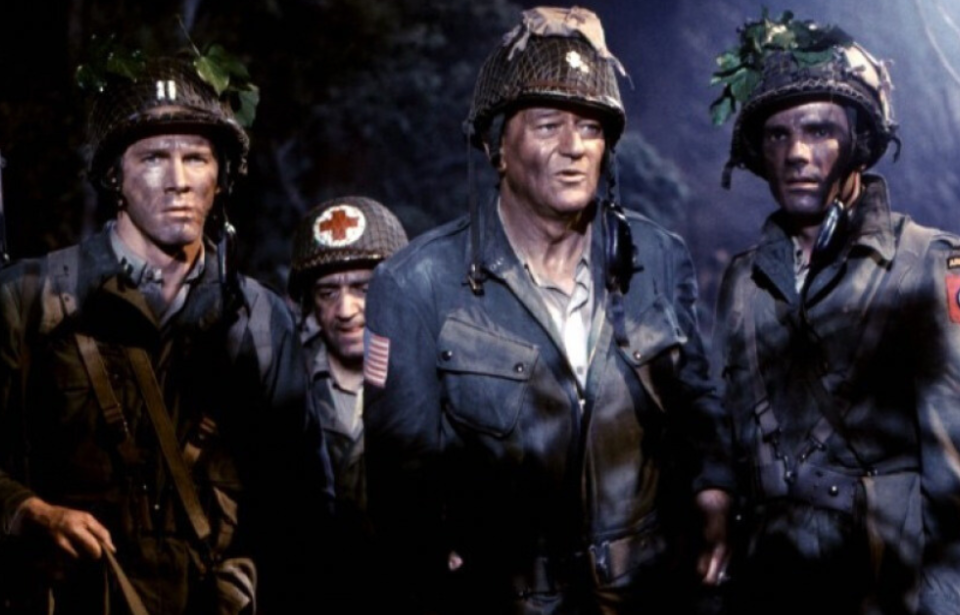If asked to name a film about the D-Day landings, The Longest Day is likely the first to come to mind. The 1962 feature, directed by Darryl Zanuck and starring the likes of John Wayne, Richard Todd and Henry Fonda, was, up until the release of Schindler’s List (1993), the highest-grossing black-and-white film. Here are some little-known facts about The Longest Day, for those of you who want to impress your friends at your next dinner party.
John Wayne disappointed the soldier he portrayed
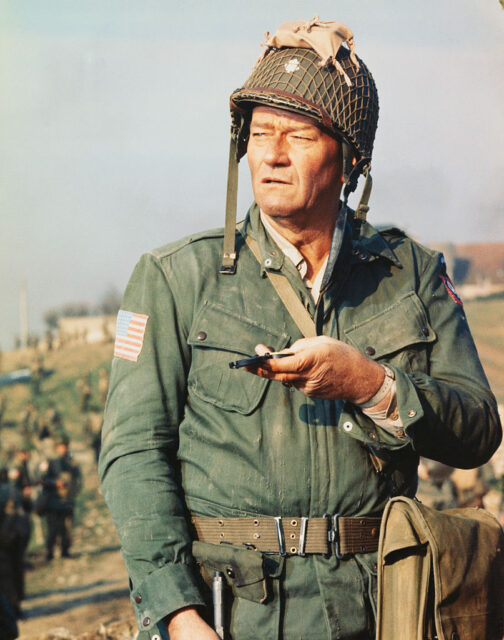
It’s a known fact that John Wayne‘s casting in The Longest Day rubbed some people the wrong way. He portrayed someone who was well younger than him – he was 28 years older than Lt. Col. Benjamin H. Vandervoort was on D-Day – and to say he was less than thrilled with Wayne’s casting would be an understatement.
He was upset that someone so much older and overweight would be portraying a paratrooper in his twenties.
Several cast members actually served in World War II
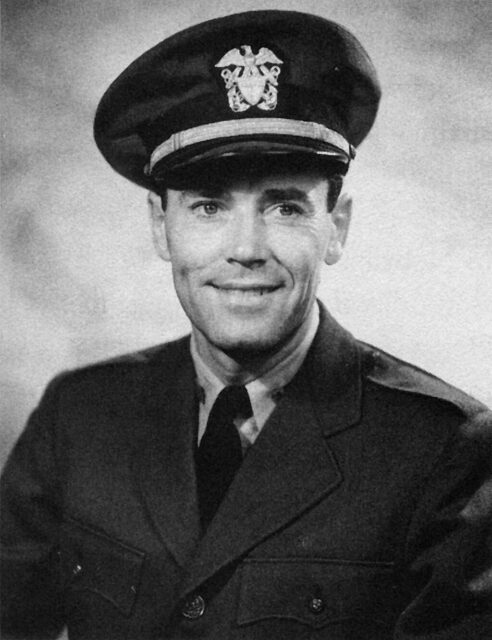
Talk about a star-studded cast! If you’re looking for a film that stars the 1960s’ most prominent actors, look no further than The Longest Day. What’s more, a number of the men who appeared in the movie were actually veterans of the Second World War.
There’s no way we can list them all, but we’ll give you the bigger names:
- Henry Fonda served with the US Navy, not wanting to “be a fake in war studio.” Despite being 37 years old at the time of his enlistment, he was determined to serve, and wound up playing a key role in operations in the Pacific Theater.
- Eddie Albert secretly worked for US Army Intelligence. While touring Mexico with a circus, he took photographs of German U-boats in harbors, after which he enlisted in the US Coast Guard. While participating in the Battle of Tarawa, he rescued 47 Marines who were stranded offshore.
- Rod Steiger saw action in the Pacific with the Navy, including during the Battle of Iwo Jima, which stuck with him through the rest of his life. When asked about his service, he later said, “I loved the Navy. I was stupid enough to think I was being heroic.”
- Leo Genn joined the Royal Artillery, just as his film career was taking off. He’d previously volunteered with the Officers’ Emergency Reserve.
- Richard Todd was a paratrooper at Pegasus Bridge and one of the first British soldiers (and the first Irishman) to land at Normandy on D-Day. Serving with the 7th (Light Infantry) Parachute Battalion, he survived heavy enemy fire while they waited for reinforcements. He later served on the frontlines of the Battle of the Bulge as a motor transport officer.
- Kenneth More was commissioned into the Royal Navy, seeing action in the Atlantic, Meditteranean and Pacific. He was among those who participated in transporting King George VI to Malta and the Allied Invasion of Sicily.
Christopher Lee didn’t look ‘military’ enough for The Longest Day
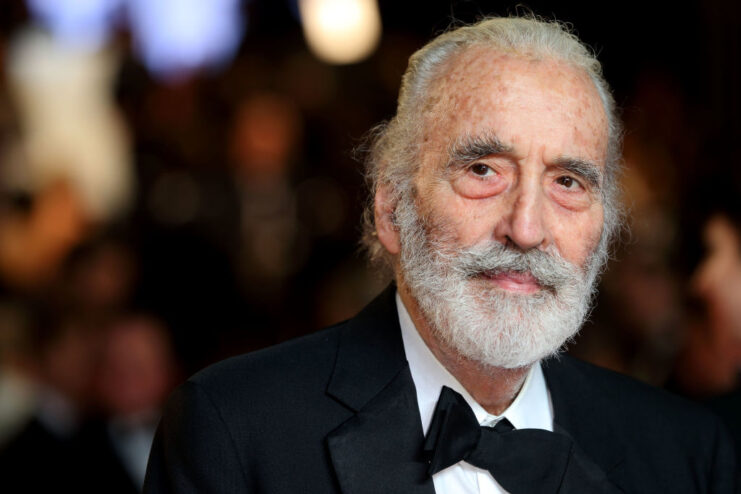
Did you know Christopher Lee – best known for portraying Sauron in The Lord of the Rings trilogy – tried out for The Longest Day? He revealed this fact in his memoirs, saying he was told he didn’t look enough like a “military man” for the movie.
The funny thing is that Lee had actually served during World War II. Along with volunteering to aid in the Winter War, he also recalled serving with Royal Air Force (RAF) Intelligence, planning bombing missions and participating in both the North Africa Campaign and the Allied Invasion of Italy. Lee also shared in interviews that he spent time in the Special Air Service (SAS), the Long Range Desert Group (LRDG), the Special Operations Executive (SOE) and the No. 1 Demolition Squadron.
It should be noted that some have questioned the extent of Lee’s service, wondering what actually happened and what he may have embellished.
Dwight D. Eisenhower almost secured a role
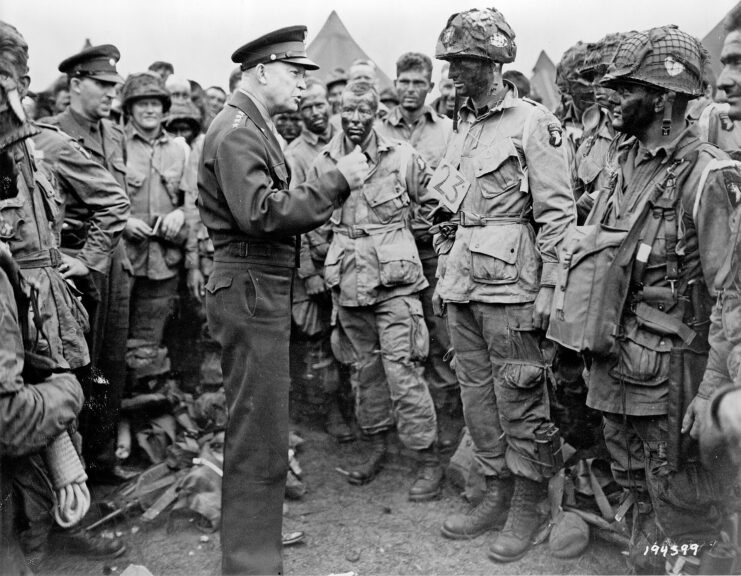
Given he was the Supreme Allied Commander, it’s no surprise Darryl Zanuck wanted Dwight D. Eisenhower to play himself in The Longest Day. While the former US president had shown a willingness to get involved, it was decided he was too old for the makeup artists to de-age.
Set director Henry Grace was chosen to portray Eisenhower, and while he was a dead ringer, appearance-wise, his voice was off, leading to his lines being dubbed by Allen Swift, who was best known for providing the voices of several characters on the 1960s cartoon, Underdog.
John Wayne wanted to stick it to Darryl Zanuck
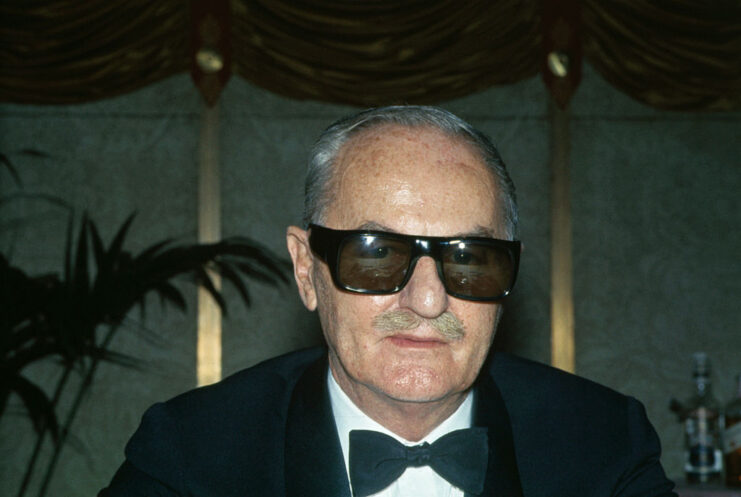
A little-known fact about the production of The Longest Day is that there was a reason why John Wayne was paid so much more than the rest of the cast – and, no, it wasn’t because his star power. He’d actually made the request to get back at director Darryl Zanuck for a prior insult.
Wayne requested – and was given – a salary of $250,000, which was 10 times more than everyone else made, and the reason for this amount dates back to the release of The Alamo (1960). The actor had been so passionate about the project that he’d used his own money to help fund it, something that proved to be a poor financial investment, as the movie flopped at the box office.
After the film hit theaters, Zanuck mentioned Wayne in an interview and explained how much he disliked when actors decided to form their own production companies. It wasn’t a vague comment, either – he’d actually said “poor old Duke,” a direct reference to Wayne’s nickname.
The crew found a World War II-era tank in the sand
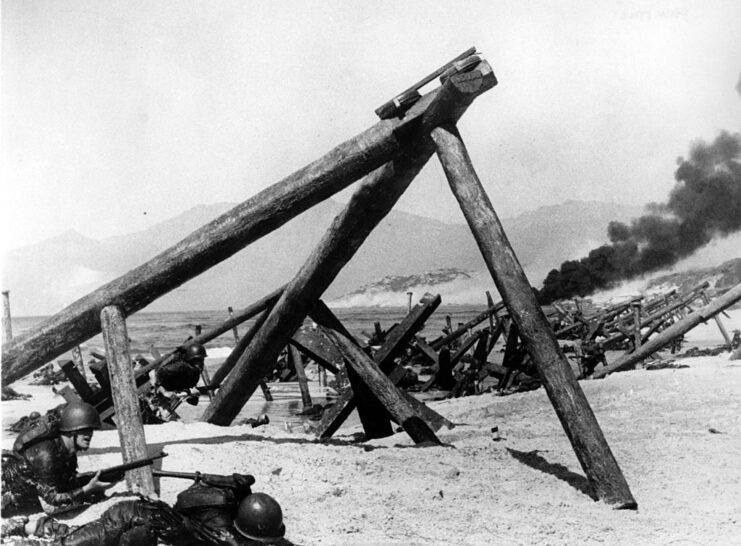
What are the odds that a film about D-Day would actually unearth a tank used on that historic day? That’s exactly what happened during the filming of The Longest Day. While clearing a section of beach near Pointe du Hoc, the crew discovered an American tank buried in the sand. They subsequently cleaned and repaired it, and positioned it with an on-screen British regiment.
There’s a reason why The Longest Day wasn’t shot in color
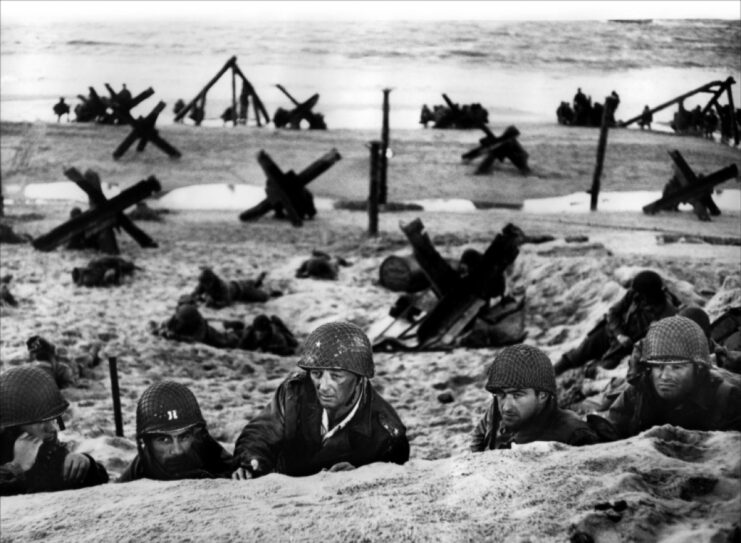
It’s a known fact that, by the time The Longest Day was released in 1962, the majority of films were being released in color. While he certainly could have filmed the movie in this burgeoning medium, Darryl Zanuck purposely filmed it in black and white.
The director opted to film The Longest Day in black and white for two reasons. The first was that he wanted the movie to look as realistic as possible, while the second was that it allowed him to use archive footage from WWII without it being overtly obvious to viewers.
Robert Mitchum led by example
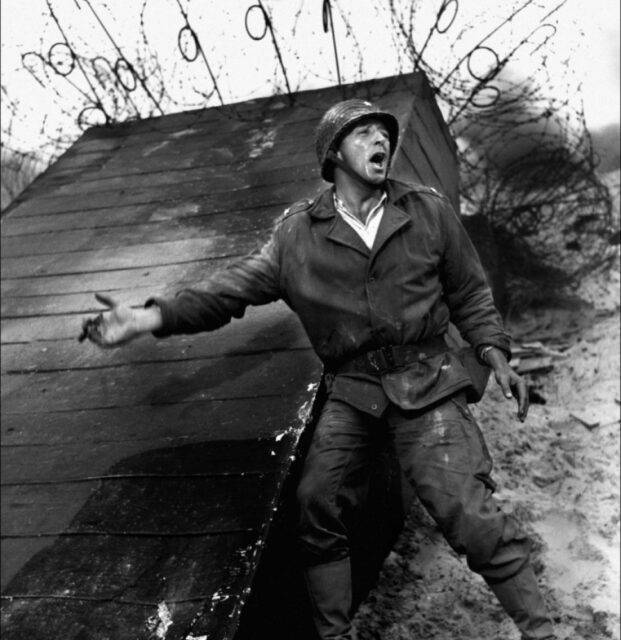
Robert Mitchum was dedicated to his craft, so much so that he took it upon himself to get the extras involved while filming The Longest Day. While shooting the landings on Omaha Beach, they refused to jump in the cold water. Mitchum, understandably, became annoyed at this and jumped in, not at all phased by the chilly temperatures, at which point everyone else followed suit.
Partnering with the US Sixth Fleet
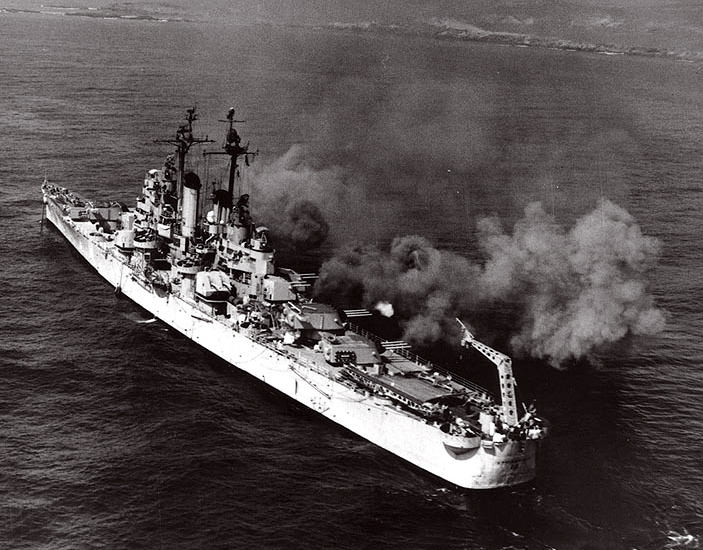
It’s not uncommon for the US military to partner with films, but did you know that the US Sixth Fleet supported the production of The Longest Day? The numbered fleet of the US Navy provided several vessels, although they were of a newer vintage.
The Sixth Fleet also supplied Darryl Zanuck with the WWII-era light cruisers USS Springfield (CL-66) and Little Rock (CL-92), which had since been reconfigured into guided missile cruisers. They lent themselves to the scenes with shore bombardments. Additionally, the fleet scenes were filmed with 22 vessels from the Sixth during maneuvers from June 21-30, 1962. The camera crews needed to make sure to not catch any aircraft carriers in the shots!
Dwight D. Eisenhower walked out of a screening of The Longest Day
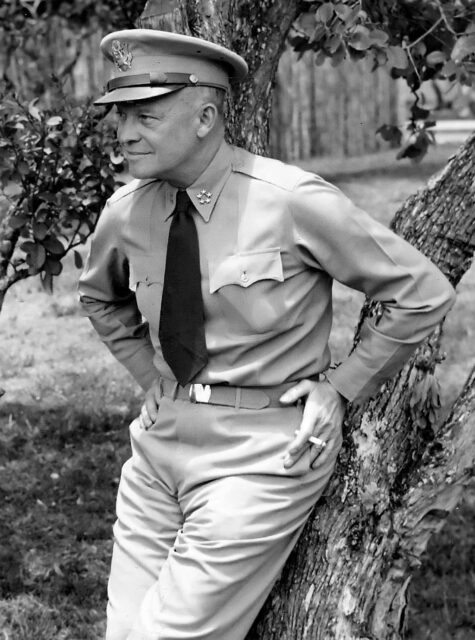
We couldn’t write a listicle about The Longest Day without mentioning the fact that, while he initially showed interest, Dwight D. Eisenhower disliked the final product. He attended a screening of the movie, but walked out after only a few minutes, frustrated by how inaccurate it was.
Production delays on Cleopatra led to actors to join the cast
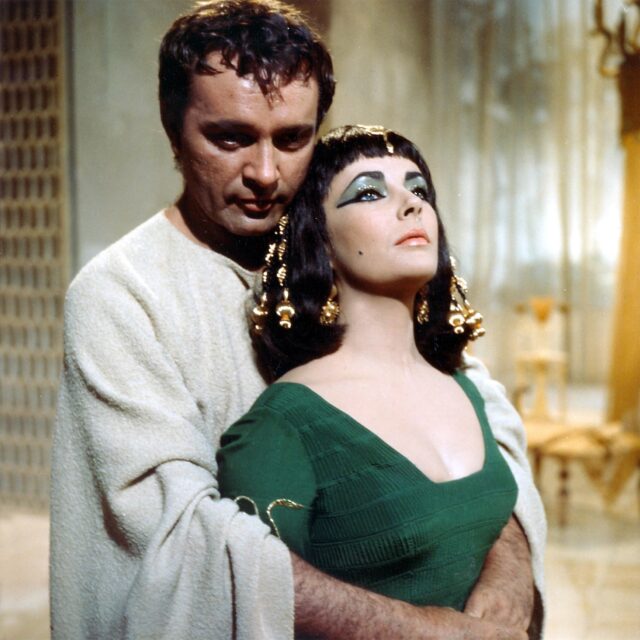
There are a surprising number of parallels between Cleopatra (1963) and The Longest Day – in fact, delays during the filming of the former resulted in two actors joining the latter’s cast.
Roddy McDowall, who portrays Pvt. Morris with the US 4th Infantry Division, grew so frustrated over the delays that he actually begged Darryl Zanuck to give him a part in The Longest Day. Richard Burton also secured a role due to the delays, portraying the part of Flight Officer David Campbell, a fighter pilot with the RAF.
Richard Todd wore the same beret on D-Day
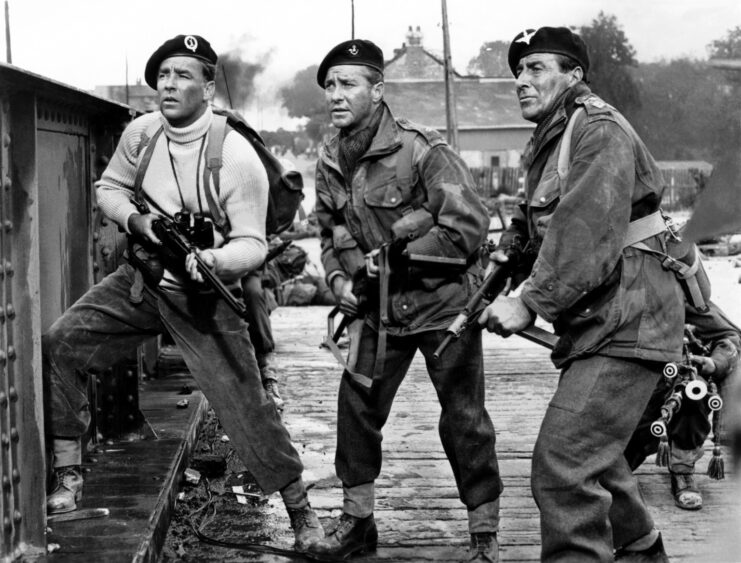
As aforementioned, Richard Todd was a paratrooper who took part in action at Pegasus Bridge. However, did you know that he brought a part of his official uniform to his role in The Longest Day?
More from us: Behind-the-Scenes Facts About ‘Crimson Tide’
If you look close enough, you’ll see he’s wearing his beret from D-Day – he just changed the cap-badge to that of the Oxfordshire and Buckinghamshire Light Infantry, the regiment of Maj. John Howard, whom he protrays in the film.
